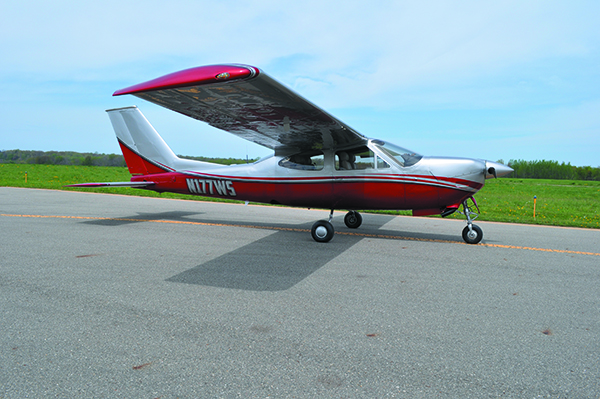After a Cessna T210M experienced an inflight breakup in Australia in 2019, the FAA issued AD 2020-03-16, effective March 9, 2020, for the visual and eddy current inspections of the carry-through spar lower cap. The AD isn’t isolated to M-model Centurions, but also applies to the 210G, T210G, 210H, T210H, 210J, T210J, 210K, T210K, 210L and T210L series.
And now the FAA has expanded the list to include over 3400 U.S.-registered Cessna models, including 177, 177A, 177B, 177RG (retracs) and the F177RG. It has also added more Cessna Centurions to the list, including P-model (pressurized) 201s and later N- and R-model aircraft.

According to the AD, corrective action includes replacement of the carry-through spar (if necessary), application of a protective coating and corrosion-inhibiting compound and also reporting the inspection results to the FAA. In the accident airplane, it was fatigue cracking that initiated at a corrosion pit (severe corrosion was also reported on other Centurions) that ultimately caused the wing failure.
These inspections/repairs have been accomplished for the majority of the fleet, and if you own one you should expect some teardown just to accomplish the initial inspection. This requires removal of the headliner, the oxygen plumbing and head protection foam pads from the spars and anything else in the way of an unobscured inspection of the full strut.
The issue shouldn’t be a surprise for existing 210 owners, but it might be for some new to the aircraft. The FAA issued an airworthiness concern sheet (ACS) on June 27, 2019, advising owners and operators of the accident and requesting relevant information about the fleet. Following the ACS, the FAA received reports of widespread and severe corrosion of the carry-through spar—something that should be a concern for anyone shopping the 210 market.
Moreover, investigation identified that these early-model airplanes were manufactured without corrosion protection or primer, increasing their susceptibility to corrosion. In the discussion portion of the AD, the FAA says the design of these early-model airplanes, where the upper surface of the spar is exposed to the environment, allows a pathway for moisture intrusion. Model 210-series airplanes were also delivered with foam installed along the carry-through spar lower cap. The foam traps moisture against the lower surface of the carry-through spar cap, which can increase the development of corrosion, says the FAA.
For more compliance data, see Textron Aviation Mandatory Single Engine Service Letter SEL–57–08, Revision 1, dated Nov. 19, 2019 (SEL–57–08 R1). This service information contains instructions for visually inspecting the carry-through spar for corrosion, damage and cracks and for completing an eddy current inspection. This service information also specifies applying protective coating and corrosion-inhibiting compound.
The FAA’s NPRM will be open to public comments until June 25, 2021. Each inspection will cost about $1827.50 according to FAA calculations.
We covered the Cessna 177 Cardinal series in the March 2020 Aviation Consumer Used Aircraft Guide.


